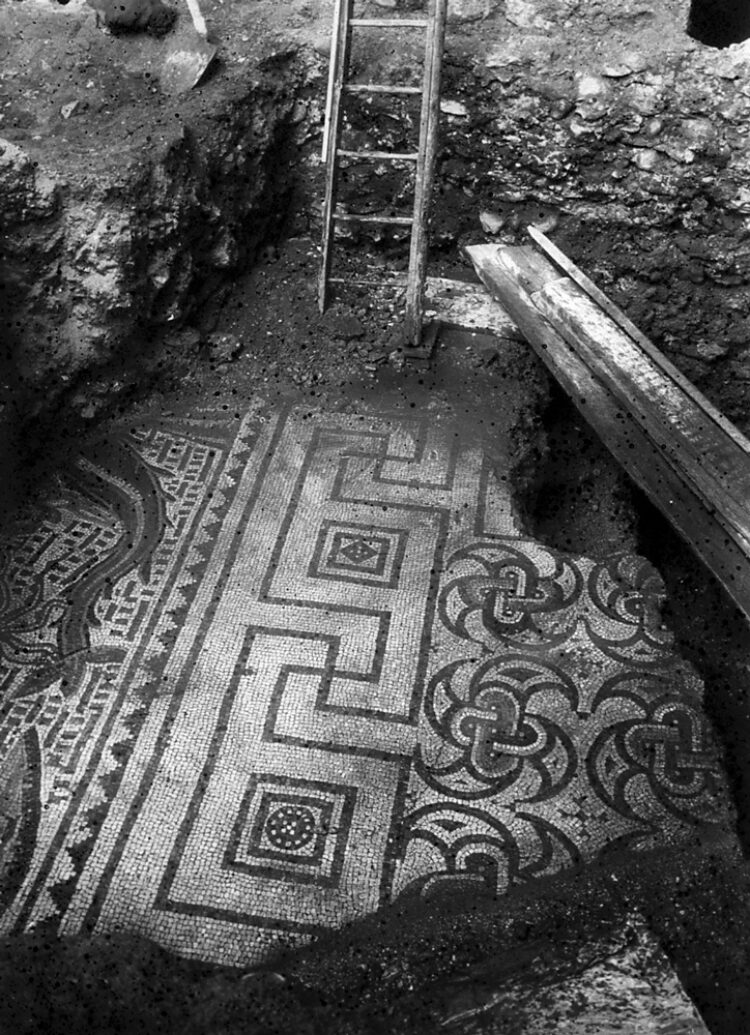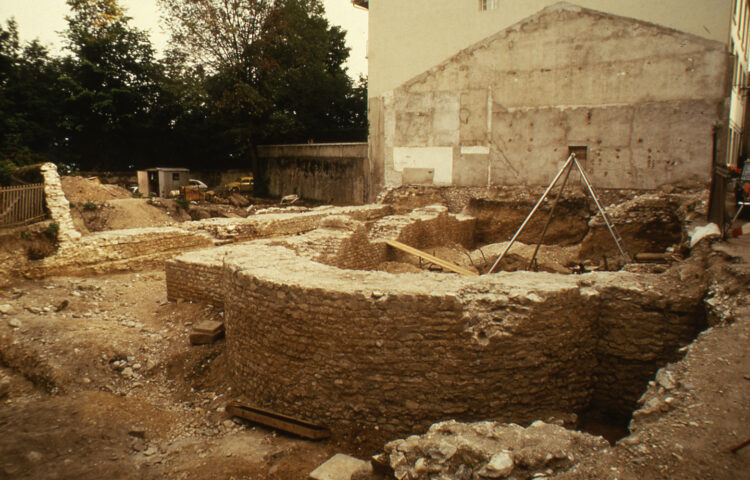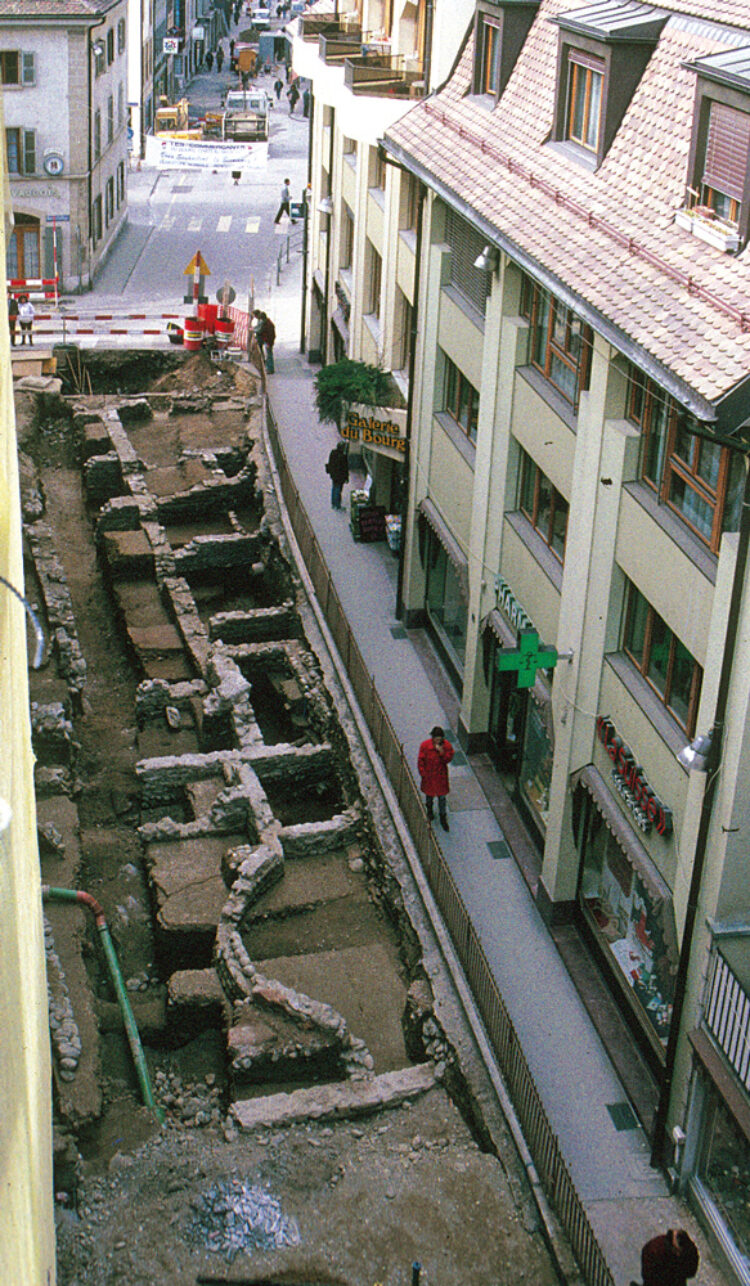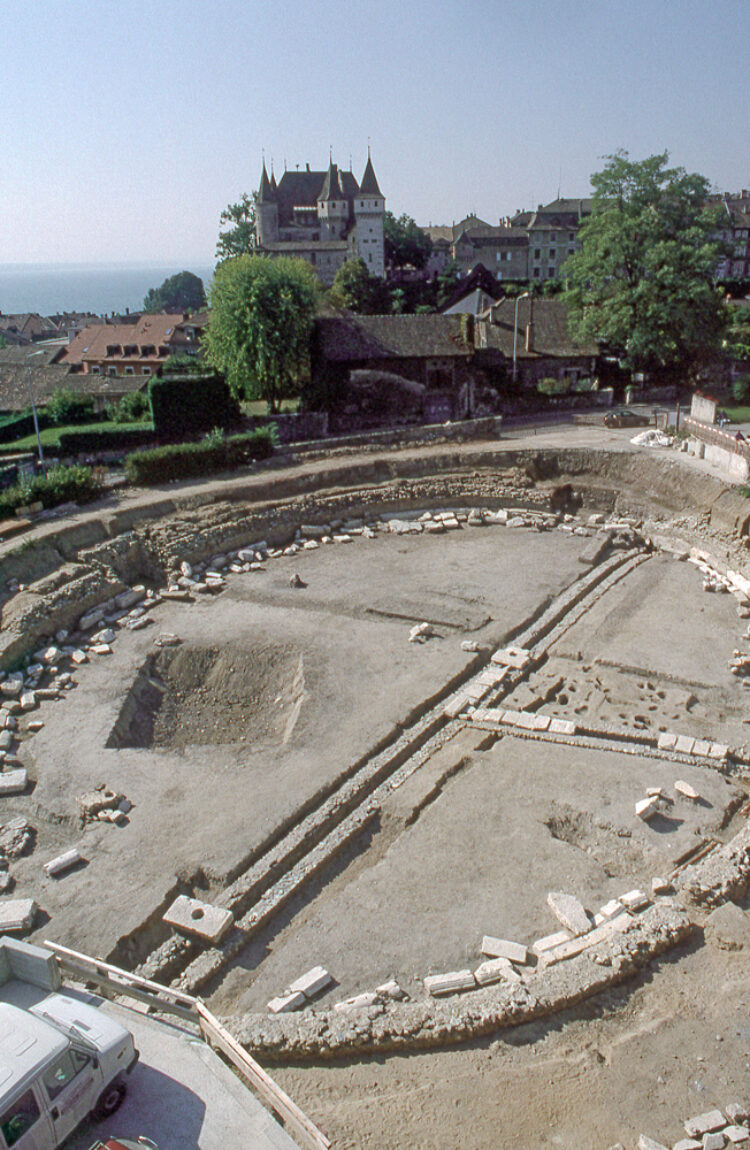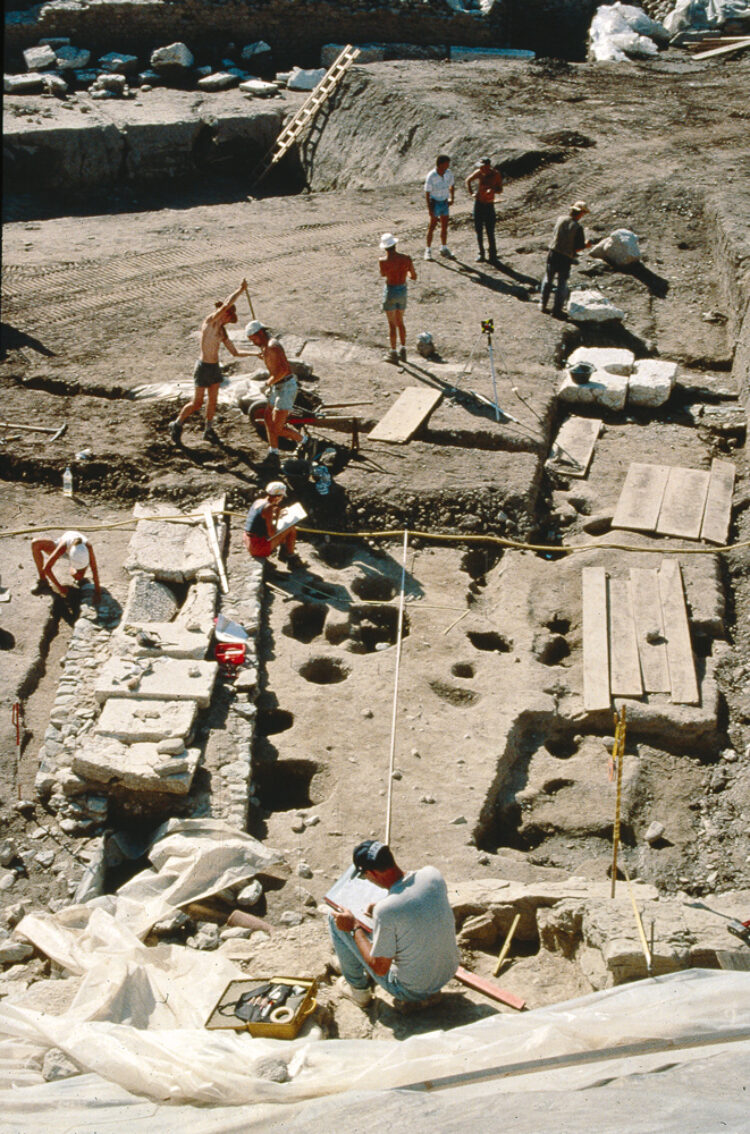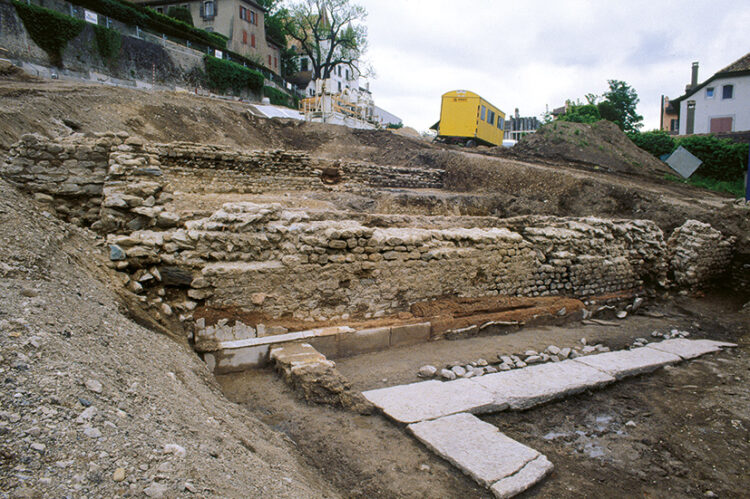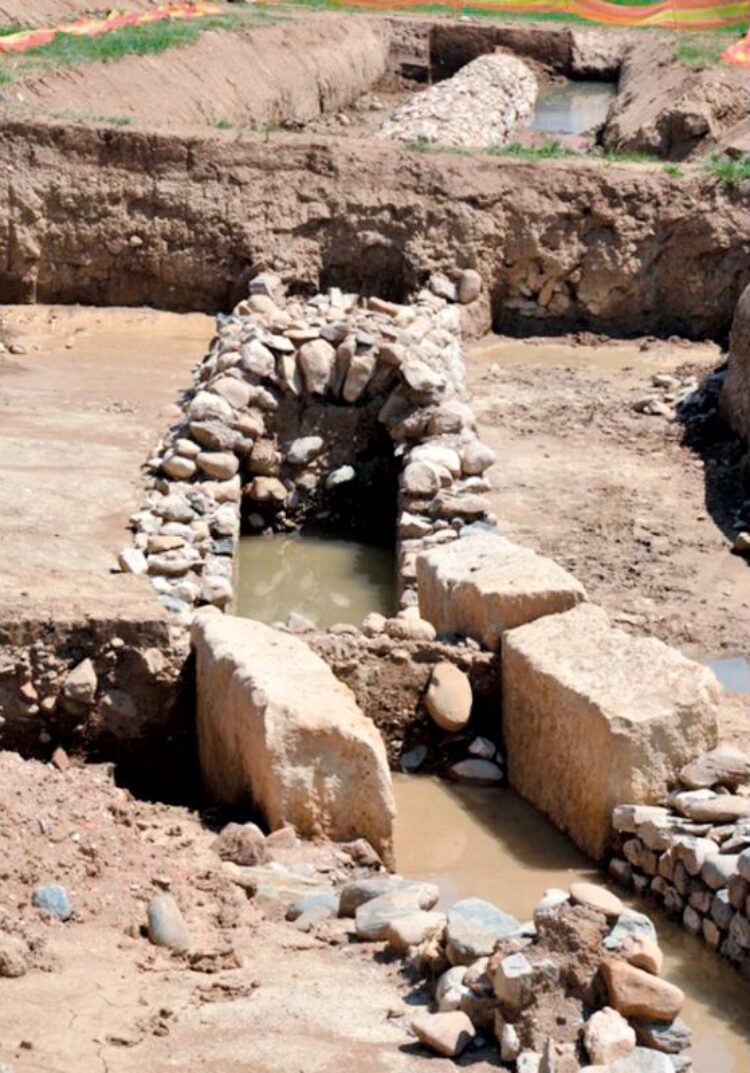The archaeological site
Nyon has always lived in direct contact with the remains of the past. It completely covers the Roman town, as its center has remained unchanged since Antiquity. Remains abound and excavations follow one another as the town develops. Most of the monuments unearthed were covered over after being documented, studied and photographed by archaeologists. Only transportable remains are preserved by the Musée romain de Nyon. The city's ancient past can be seen in the streets, where some of the remains and replacements of Roman blocks on old facades can be seen.
This major archaeological site in Switzerland has unearthed elements of the forum, the foundations of the basilica, dwellings, necropolises, the macellum (covered market), artisanal areas, the aqueduct, thermal baths and the amphitheatre. The potential for discovery that lies dormant beneath the town of Nyon is still far from exhausted.
Like the buildings, many ancient objects have been found over the centuries in the city’s subsoils. They bear witness to the lives of the inhabitants of Noviodunum which the Roman Museum is dedicated to preserving and showcasing.
Julius Caesar’s legacy
Around 45 BC, shortly after the end of the Gallic War, Julius Caesar created a colony of Rome on the shores of Lake Geneva. It was apparently intended as a home for veterans of his army –Equestris related to cavalry – and to establish and consolidate the Roman presence in the region. The Colonia Iulia Equestris stretched along the right bank of the Rhône, between the Pays de Gex, the Jura and the Côte vaudoise. Its capital is Noviodunum, which lies exactly below the modern-day Nyon.
Like all colonies, the Colonia Iulia Equestris was given a specific political status, modelled on the institutions of Rome. It was seen as a showcase for imperial power in the region. Over time, it lost its preponderance and, from the end of the 3rd century AD, entered a phase of decline. Its monuments fell into ruin and provided building materials all around Lake Geneva: in Nyon for the Tour César and the Porte Sainte-Marie, in Geneva for a surrounding wall and in Lausanne for the foundations of the cathedral.
Human presence on the shores of Lake Geneva dates back to the Neolithic period. A Late Bronze Age site has recently been identified on the outskirts of Nyon, and the area was probably occupied during the Iron Age, but the oldest archaeological remains found in the town center date back to Roman times.
